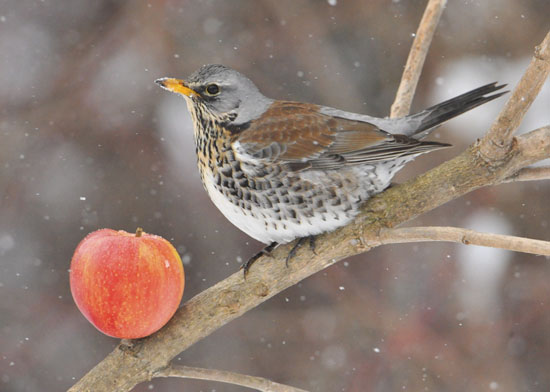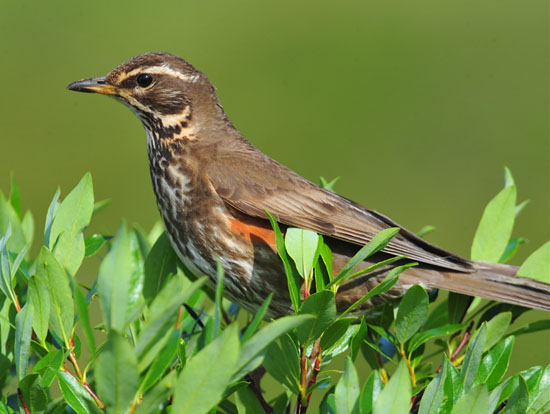
Fieldfare
WINTER VISITORS TO THE SULGRAVE AREA
(Home)
FIELDFARE (Turdus pilaris) and REDWING (Turdus iliacus)

Fieldfare

Redwing
Of the six members of the thrush family which are regularly found in Britain, three – blackbird, song thrush and mistle thrush – are full-time residents and one, the rare and declining ring ouzel, is a summer visitor, found usually on steep boulder-strewn hillsides or in gullies in moorland or mountain areas. Two however, the fieldfare and the redwing, are winter visitors, although breeding of both species has occasionally been recorded in northern Britain.
Fieldfares and redwings migrate, often in large flocks, from Scandinavia and northern continental Europe from September onwards, depending on the onset of wintery weather and the dwindling supply of their usual food, rowan berries. Arriving in this country, they devour berries of all sorts. Where the hedges have not been hard cut back, they settle in noisy parties, sometimes of both species, to feed on hawthorn, holly and dog rose, as well as rowan, and will also visit gardens to seek out ornamental shrubs such as cotoneaster. The birds may also be seen quartering the ground in pastures or ploughland in search of invertebrates. The last departures for their breeding grounds may be as late as April.
The fieldfare, about the same size as the blackbird, can be distinguished by its grey back and, in flight, by a prominent white underwing patch. Its call is loud and harsh ‘tchak-tchak-tchak’. The smaller redwing (about song thrush-size) is brownish, with an obvious creamy stripe above the eye and a reddish patch under the wing. Its call is a lovely thin whistle, most likely to be heard during its night-time migration – a most evocative and unexpected sound when a flock is passing over an urban location.
Photos: John Sheppard. Text: George Metcalfe.
See Bird Archive for other birds in this series.